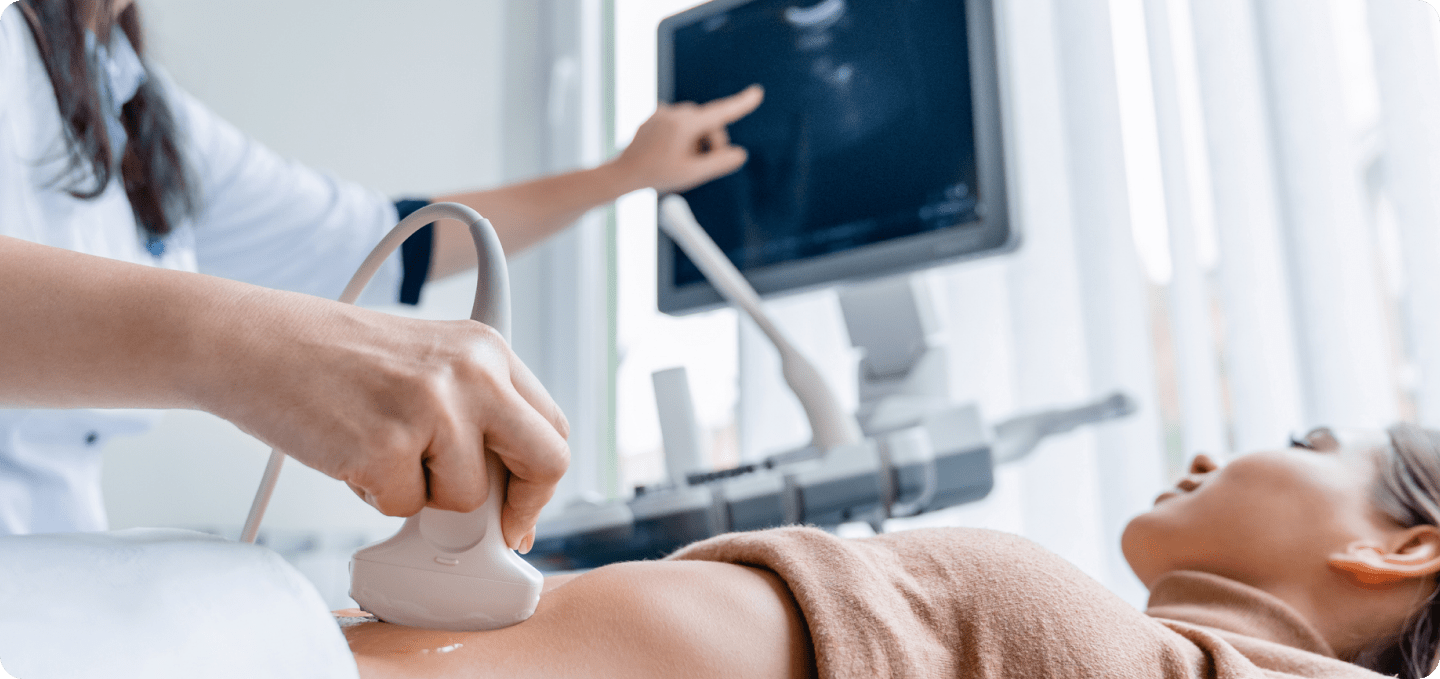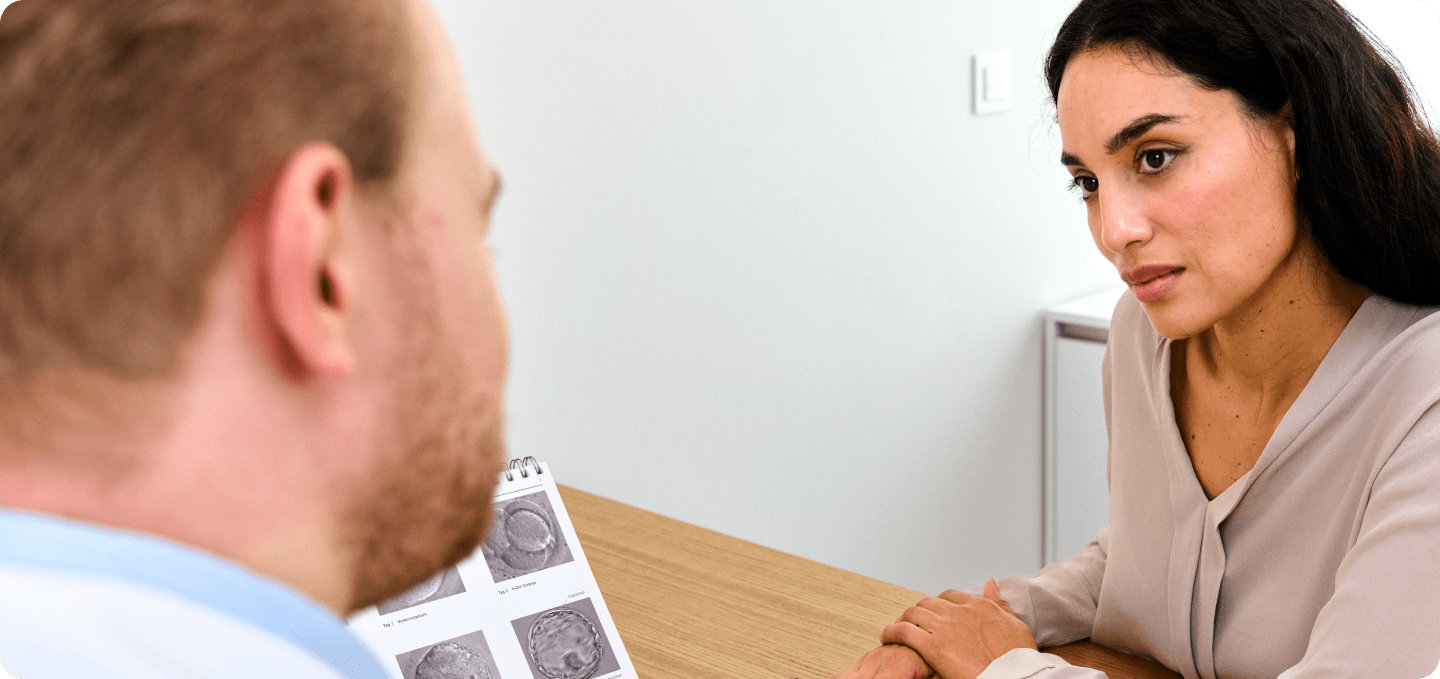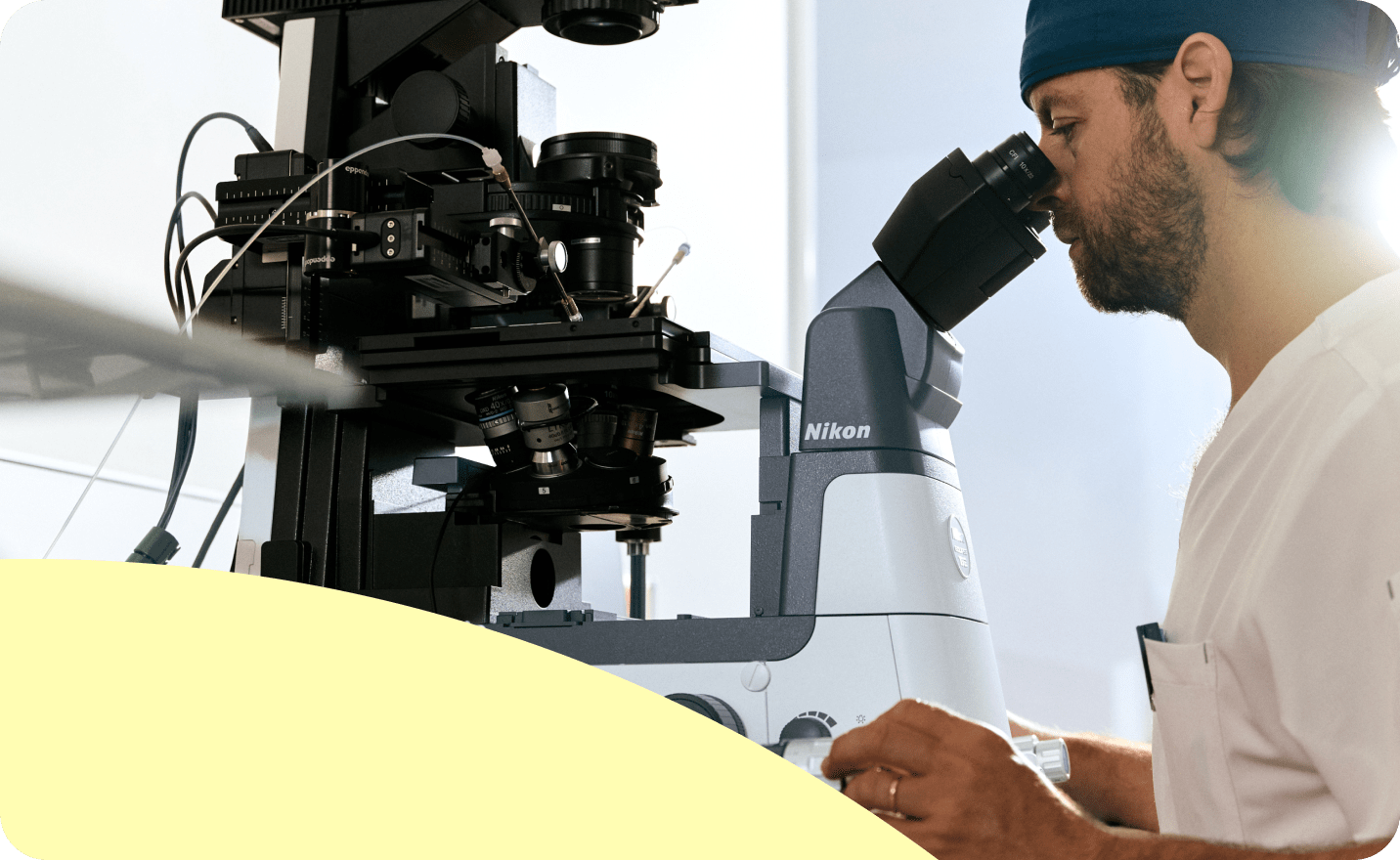Discover why follicle size plays a key role in IVF success and how egg retrieval is determined to maximize your chances of pregnancy.
Key Facts About Follicle Size
- Follicle size provides insight into egg maturity.
- Mature eggs have a higher chance of fertilization.
- The right follicle size is crucial for IVF success.
- Generally, follicles measuring 16 to 22 mm are considered optimal.
- The ideal timing for egg retrieval is determined through ultrasound scans and hormone measurements.
Follicle size plays a key role in achieving pregnancy
Egg retrieval is a crucial step in in vitro fertilization (IVF), marking the moment when mature eggs are collected from the ovaries. But why is follicle size so important for the success of the treatment?
In this article, you'll learn why the right follicle size matters, what the ideal measurements are, and how the egg retrieval process works.

What Is Egg Retrieval?
Follicular puncture, also known as egg retrieval, is a crucial and routine procedure used in ICSI, IVF, and social egg freezing. During this process, mature follicles are carefully punctured with an ultra-thin needle to extract the eggs contained within.
The procedure is performed under ultrasound guidance through the vagina. The goal is to collect as many mature eggs as possible to maximize the chances of successful fertilization.
What Is the Ideal Follicle Size for Retrieval?
While numerous studies suggest that follicles measuring 16 to 22 mm in diameter have the highest likelihood of containing mature, fertilizable eggs, optimal follicle growth remains a complex topic under ongoing research.
It is widely accepted that follicles smaller than 14 mm often contain immature eggs with lower fertilization potential. However, recent studies indicate that even follicles as small as 13 mm—or even between 8 and 12 mm—can develop into high-quality blastocysts and result in healthy pregnancies.
This supports the practice of also retrieving smaller follicles to maximize the total number of viable blastocysts.
On the other hand, follicles larger than 22 mm may contain overripe or degenerated eggs, which can negatively impact pregnancy rates. However, further studies suggest that the blastocyst formation rate may still be optimal in follicles up to 27.5 mm in diameter. Some findings even indicate that follicles measuring 28 mm or more do not necessarily show a significantly lower blastocyst formation rate compared to those between 16 and 27.5 mm.

How Is the Ideal Timing for Egg Retrieval Determined?
Follicle size is a key indicator of egg maturity in fertility treatments. During ovarian stimulation, follicle growth is closely monitored through ultrasound scans and hormone level measurements.
The optimal timing for egg retrieval is primarily determined by the size of the dominant follicle. This so-called lead follicle is the largest one and signals the approaching ovulation. Since not all follicles grow at the same rate, special attention is given to the lead follicle.
Studies have shown that in intrauterine insemination (IUI) with hormonal stimulation, lead follicles measuring 23 to 28 mm in diameter are associated with the highest pregnancy rates.
In general, a lead follicle should reach a diameter of 18 to 24 mm to ensure optimal egg maturity for fertilization. Once this size is reached, final egg maturation is triggered by administering human chorionic gonadotropin (hCG) or a gonadotropin-releasing hormone (GnRH) agonist.
Egg retrieval is typically performed 32 to 36 hours after ovulation is triggered.

Individual Factors and Follicle Size Variability
The optimal follicle size is not a fixed value that applies to every woman. Instead, it can vary depending on several individual factors. Age plays a significant role, as ovarian reserve and egg quality decline with increasing age.
The individual response to hormonal stimulation is also crucial. Some women respond more strongly to stimulation than others, leading to faster follicle growth.
Additionally, certain medical conditions—such as polycystic ovary syndrome (PCOS)—can affect follicle development. Therefore, personalized monitoring and treatment adjustments are essential to determine the ideal timing for egg retrieval.
The Role of Hormone Levels, Especially Estradiol
Hormone levels play a key role in assessing follicle maturity. Estradiol, in particular, provides important insights into follicle growth and function. This estrogen is produced by granulosa cells within the follicles.
As follicles grow, estradiol levels in the blood rise. Measuring estradiol levels helps assess the number and development of mature follicles. An increasing estradiol level indicates that follicles are responding well to stimulation and may contain mature eggs.
Doctors regularly monitor estradiol levels to determine the optimal timing for ovulation triggering and egg retrieval. Other hormone levels—such as luteinizing hormone (LH) and progesterone—also provide valuable information about follicle maturity and the best timing for retrieval.

The Egg Retrieval Process
- Ovarian Stimulation: Hormonal treatment with FSH (follicle-stimulating hormone) and other medications is used to promote follicle growth.
- Ovulation Trigger: Once most follicles have reached the desired size, final egg maturation is triggered with an hCG injection (human chorionic gonadotropin) or a GnRH agonist.
- Day of Egg Retrieval: Approximately 32 to 36 hours later, the procedure is performed at the fertility clinic under light sedation or short anesthesia.
- Egg Collection: A fine needle is used to aspirate follicular fluid and retrieve the eggs, which are then examined in the lab for maturity. Typically, a sperm sample is also provided on the same day for fertilization.
- Fertilization: The retrieved eggs are combined with sperm (via IVF or ICSI) and monitored for fertilization.
- Embryo Transfer: After a few days, the fertilized eggs (embryos) are transferred into the uterus to implant.
Follicle Count vs. Quality: Which Matters More?
A high follicle count is desirable, but it is not the only factor for success. Egg quality is crucial, and it tends to decline with age.
Therefore, it is essential to focus not only on the number of eggs but also on their maturity and overall quality. Factors such as estradiol and progesterone levels also influence egg quality.

Additional Considerations for IVF Egg Retrieval
- In rare cases, ovarian hyperstimulation syndrome (OHSS) can occur.
- Not all retrieved eggs are suitable for fertilization.
- Excess fertilized eggs can be preserved through cryopreservation for future treatments (Frozen Embryo Transfer).
- After retrieval, the luteal phase begins and can be supported with progesterone to promote implantation.
Frequently Asked Questions About Follicle Size
Can eggs continue to mature after retrieval?
Yes, under certain conditions, eggs can continue to mature after retrieval. This process, known as in vitro maturation (IVM), allows immature eggs to be cultured in the lab until they reach full maturity before fertilization.
However, IVM has a lower success rate compared to natural maturation inside the body. Therefore, it is typically used only in specific cases—such as for women at high risk of OHSS or when a significant number of immature eggs are retrieved during the procedure.
Can eggs be retrieved in a natural cycle?
Yes, eggs can also be retrieved in a natural cycle without hormonal stimulation. This approach, known as Natural Cycle IVF, involves monitoring the body's natural ovulation and retrieving the single egg that has matured on its own in that cycle.
The advantages of this method include:
- A gentler approach, as no additional hormones are used.
- No risk of ovarian hyperstimulation.
However, there are some limitations:
- Only one egg is typically retrieved, which lowers the overall success rate compared to conventional IVF, where multiple eggs are collected.
- Success rates can be lower because the number of available eggs is naturally limited.
- The woman must have a regular menstrual cycle to ensure precise ovulation tracking and optimal timing for egg retrieval.
Natural Cycle IVF may be an option for women with a low ovarian reserve or for those who prefer to avoid or have not responded well to hormonal stimulation.
Follicle Size Is Not Everything
For couples trying to conceive, it's important to understand that follicle size is just one factor in achieving pregnancy success. Even follicles that reach the optimal size may not always contain a viable egg. Therefore, it’s crucial not to focus solely on this single parameter.
During IVF treatment, follicles measuring 16 to 22 mm are typically targeted, as they are most likely to contain mature, fertilizable eggs. However, accurately determining the optimal timing for egg retrieval is key. This requires close monitoring through ultrasound scans and hormone level assessments, along with an individualized approach to hormonal stimulation.
Ultimately, consulting with your fertility specialist is the best way to assess your unique situation and maximize your chances of a successful pregnancy.
At our fertility clinic in Zurich, we provide personalized treatment plans tailored to your individual needs, ensuring you receive the best possible care on your fertility journey.







